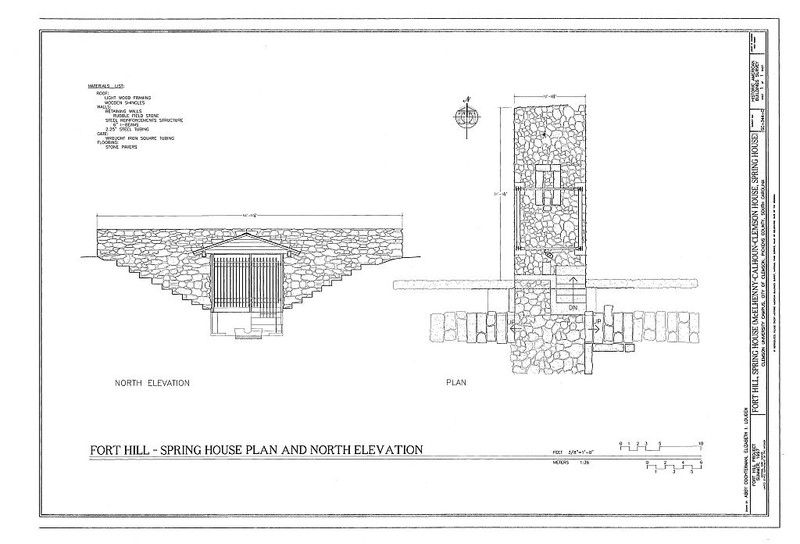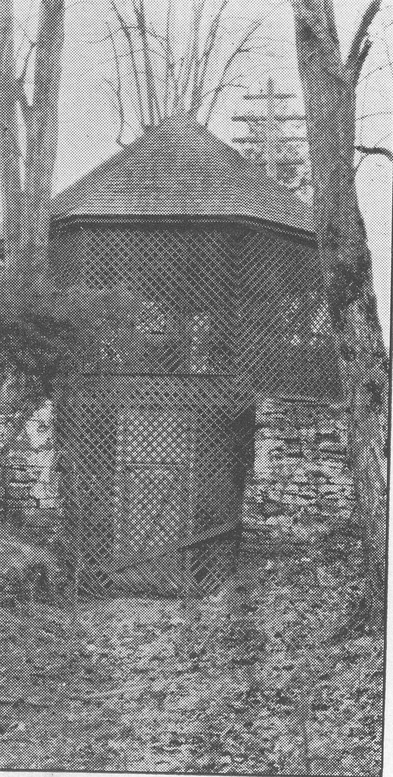Fort Hill Spring House
Introduction
Author-Uploaded Audio
00:00 / 00:00
Listen to a narration of this entry's description by Fort Hill User.
Text-to-speech Audio
Images
Schematics of the Spring House

Cadets at the Spring House

Pump House

Backstory and Context
Author-Uploaded Audio
00:00 / 00:00
Listen to a narration of this entry's description by Fort Hill User.
Text-to-speech Audio
The Spring House had a hydraulic pump and was built and operated by the enslaved African Americans at Fort Hill. There are no known records which indicate who built or operated the pump. African Americans would have pumped water regularly and heated it for the cooking, bathing, and cleaning needs of the family. When Union Troops came through Pendleton in 1865, they came to Fort Hill for provisions. Fearing the worst, Margaret Calhoun, A. P. Calhoun's wife, sent her young son, Patrick Calhoun, to hide in the Spring House with a young African American boy named Erasmus.
In 1881, Scribner's Magazine wrote this description of the Spring House:
"Just under the brow of the hill, in front of the house, bursts out a copious spring, whose drainage has cut a deep gully in the rocky slope. over this spring was a low, square house, the mossy roof of which was too low to obstruct the view from the piazza. Underneath, the rock was excavated into a large chamber, where the spring was curbed and taught a sober channel, cooling the air for the rows of pans of milk and the jars of butter that dwelt in the shady, semi-subterranean retreat. Stone steps led down to this dairy, and a phoebe-bird or two built a nest in the rough portal. Beyond, a little way, four stout posts held a large pigeon-house, a ladder's length above the ground, and beyond this stretched a clover field down to the river" (Gilder and Holland 908).
Cite This Entry
Admin, Clio and Caroline M. Ross on behalf of Fort Hill. "Fort Hill Spring House." Clio: Your Guide to History. July 30, 2020. Accessed March 14, 2025. https://theclio.com/entry/104488
Sources
Richard Watson Gilder and J. G. Holland, “The Century Illustrated Monthly Magazine,” 1881, 120 v.
images courtesy of Fort Hill
images courtesy of Fort Hill
images courtesy of Fort Hill

